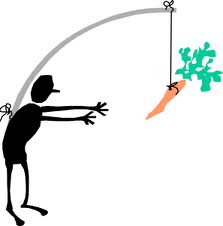Hertzberg’s Motivation and Hygiene Factors
Hertzberg’s (1959) Motivation and Hygiene factors represent a prominent model in the area of employee motivation. In this model employee motivation is found to be impacted by two major factors: motivators and hygiene.
Hygiene factors such as company policies, compensation and working conditions do not necessarily motivate employees; however, their absence is most likely to cause dissatisfaction.
Motivators, on the other hand, include the level of achievement recognition by management, career progress opportunities, and responsibilities associated with the position and these factors can be manipulated with in order to achieve higher level of employee motivation.
Importantly, managers need to be able to distinguish between motivators and hygiene in their organisations, and they need to be able to achieve a positive impact of both factors.
Intrinsic motivation- the self-generated factors that influence people to behave in a particular way or to move in a particular direction. These factors include responsibility (feeling that the work is important and that having control over one’s own resources), autonomy (freedom to act), scope to use and develop skills and abilities, interesting and challenging work and opportunities for advancement.
Extrinsic motivation- what is done to or for people to motivate them. This includes rewards, such as increased pay, praise, or promotion, and punishments, such as disciplinary action, withholding pay, or criticism.
McClelland’s theory (1961, p.214) assumes that people have three innate needs: the need for achievement, the need for affiliation, and the need for power. According to Adams’ theory (1965, p.82) employees always strive for equity between themselves and other workers. Equity is achieved when the ratio of employee outcomes over inputs are equal.
Victor Vroom’s theory states, (1964, p.122) that employee effort will lead to performance and performance will lead to rewards. Rewards can be either positive or negative. Positive rewards will motivate employees, while negative rewards will de-motivate them. Vroom’s theory suggests that although individuals goals may vary, they can be motivated if they believe that:
- There is a positive correlation between their efforts and performance,
- Positive performance will result in a desirable reward,
- The reward will always satisfy an important need,
- The desire to satisfy the need is strong enough to make the effort worthwhile.
References
- Adams, JS, 1965, Inequity in social exchange. In L. Berkowitz (ed.), Advances in experimental social psychology. New York: Academic Press.
- Herzberg, F, Mausner, B, Snyderman, BB, 1959, “ The motivation to work”. New York: John Wiley & Sons.
- McClelland, DC, 1961, “The achieving society”, New York, Van Nostrand Reinold.
- Vroom, VH, 1964, “Work and motivation” New York: Wiley.

